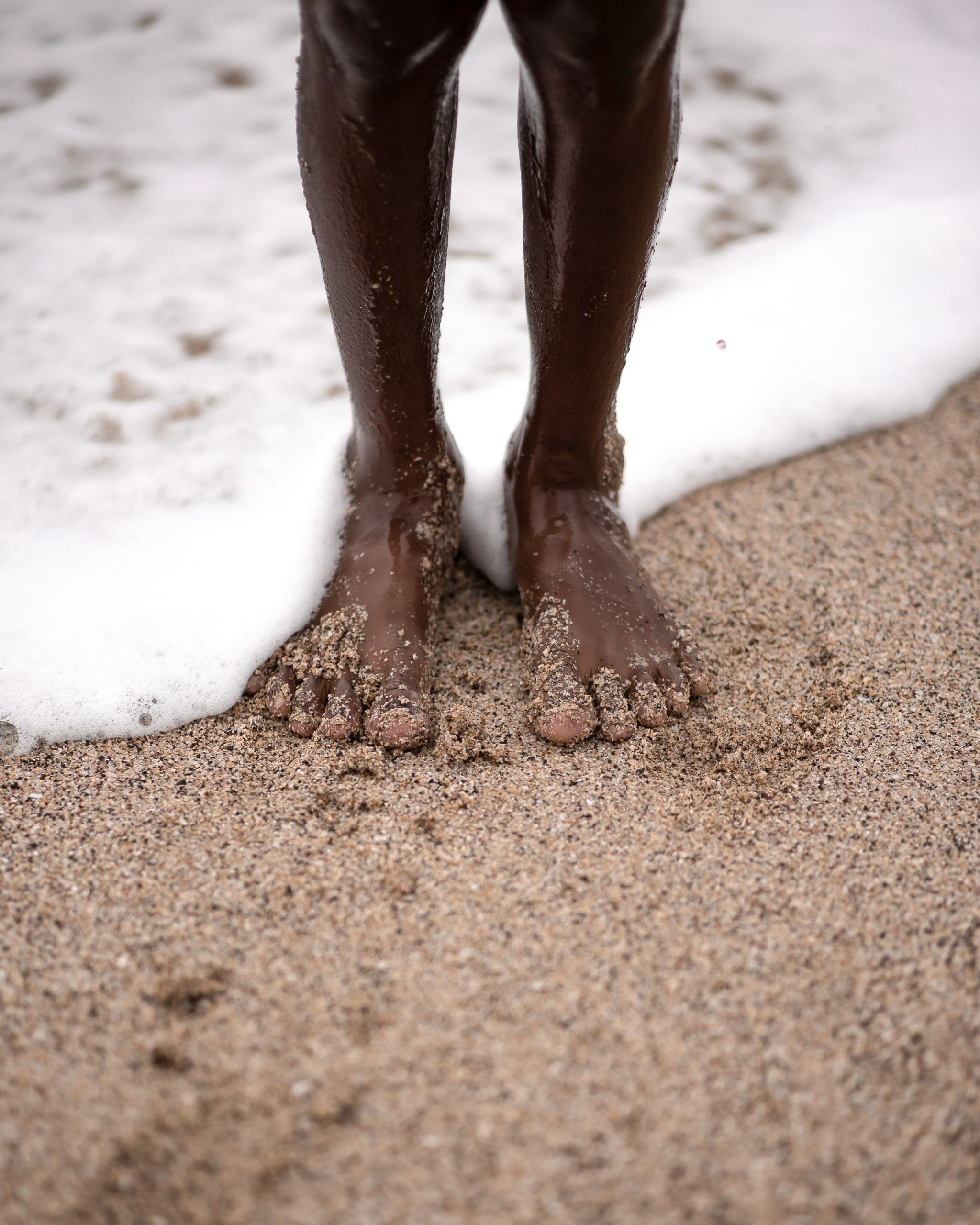Do "Hu Care" about your feet?
Why is barefoot earthing or grounding essential for our bodies?
If we look closely at our feet or if we feel pain in them one day, we suddenly realize that our feet are no longer those baby feet that were once ours.
This simple observation can be accompanied by a severe awareness (as it was for me!) and the desire to engage in a fundamental work: to give back to our feet their shape and thus their full initial functions (balance, stability, cushioning, propulsion and connection).
1. The perfect foot... or not!
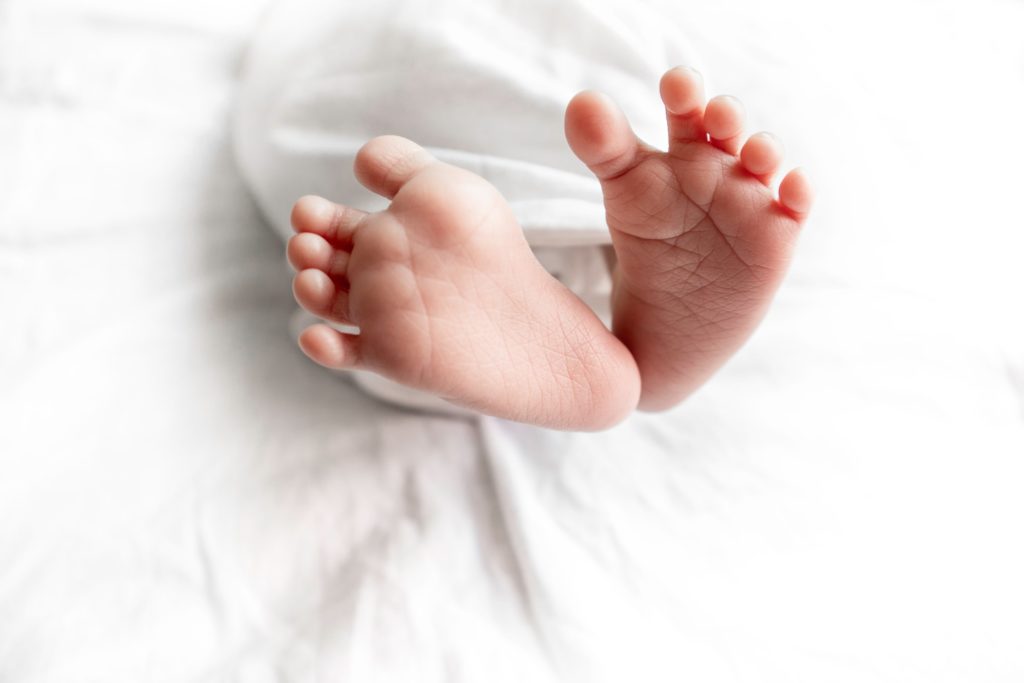
Just look at a baby’s feet.
You can see that the big toe and the little toe are separated from the 3 central toes.
This is how they can play their role as stabilizers for the foot (and therefore the ankle, knees, hips, back…).
Our main problem: shoes
In our society, the shape and function of the feet change with age. When feet are exposed to conventional footwear, the toes become compressed and curled. Stiff shoes and arch support decrease muscle activation and range of motion of the toes, resulting in foot weakness and atrophy.
With long-term use of restrictive footwear, our once nimble and mobile toes lose their ability to move independently. In cultures around the world that remain barefoot or lightly shod, the toes maintain a natural shape and spread, and the strength and dexterity of the feet and toes are preserved into adulthood and old age. It is not inevitable that your feet become deformed and painful!
Perfect design put to the test
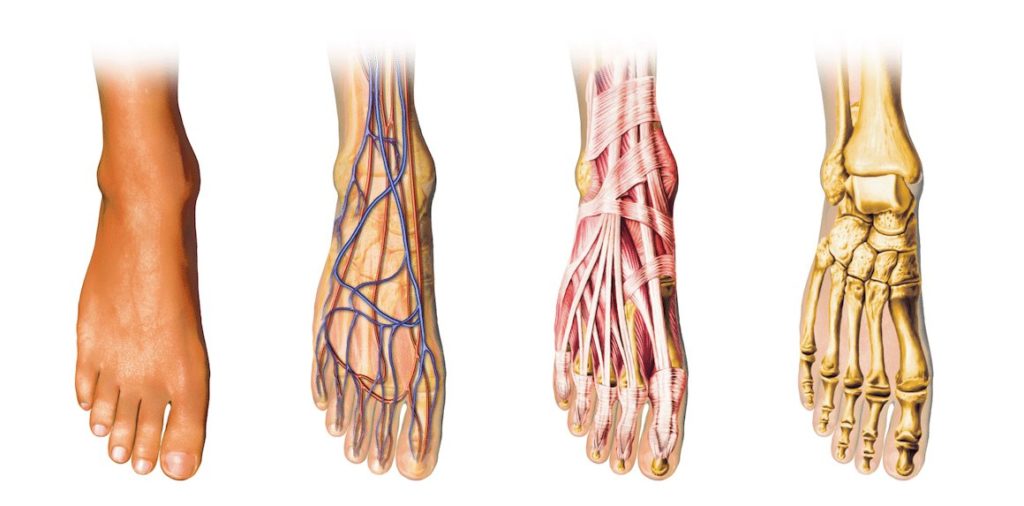
Strength and mobility are key components of overall musculoskeletal health. Unfortunately, due to the design of the shoes, the foot is often prevented from reaching its full potential.
With 26 bones, 33 joints and over 100 muscles, tendons and ligaments, the human foot is extraordinarily complex.
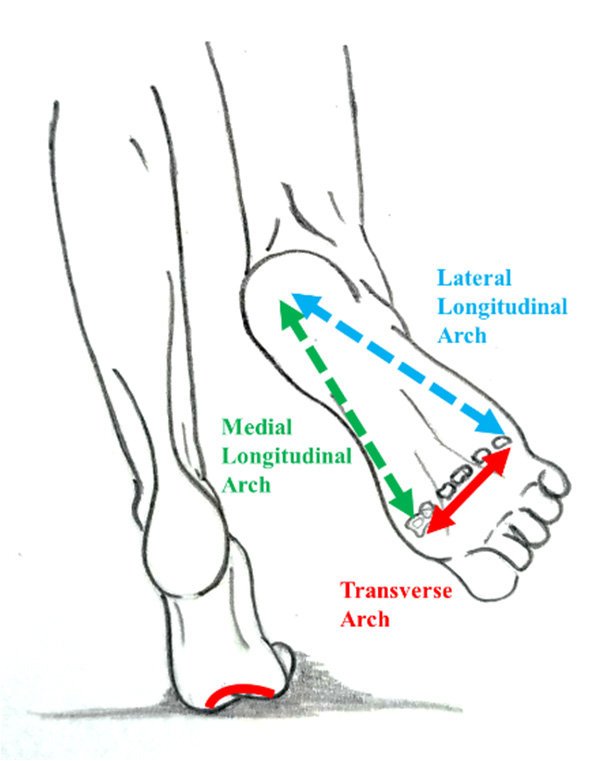
Three arches cover the heel and forefoot.
Like a powerful spring, these arches are designed to flex, bounce and absorb shock to reduce impact forces on joints higher in the body.
With long-term exposure to conventional footwear, our feet become weakened, our toes become deformed and our muscles shorten and atrophy.
Shoes continually force the arch of the foot to behave in an unnatural way, which alters gait, posture and balance.
Our feet are therefore dependent on structured, cushioned and supported footwear.
The 4 differences game
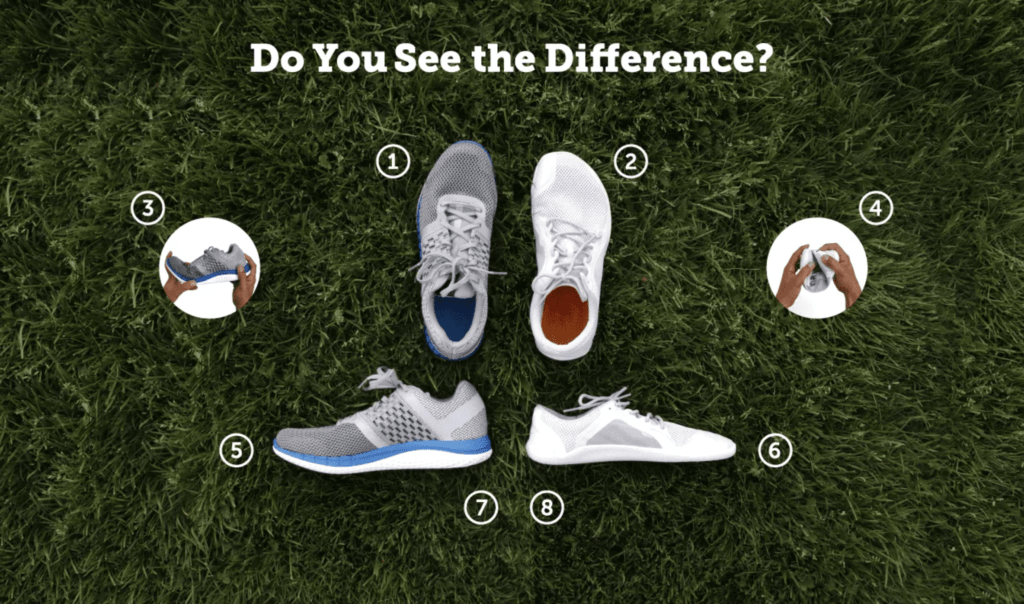
The tip of the shoe
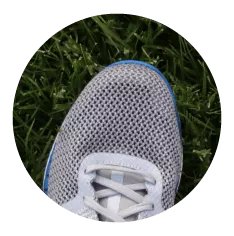
1. Conical shape
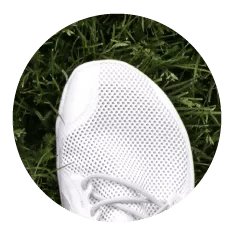
2. Shape following that of the toes
1. Tapered shape: this unnatural shape compresses the toes into a point, which can lead to foot deformities and problems such as bunions, hammertoes, neuromas, plantar fascia pain and overpronation.
2. Shape following that of the toes: this shape leaves all the space to the toes so that they can move in all freedom, without being obstructed. This allows the foot to regain its natural fan shape.
The sole

3. Rigid sole

4. Flexible sole
3. Rigid: this characteristic acts like a cast, limiting the range of motion of the feet. This leads to muscle atrophy and makes the feet dependent on additional cushioning or orthotics.
4. Flexible: this characteristic allows us to react to the ground with a flexible and balanced gait. A thin, flexible insole works with the foot muscles, not against them, strengthening the arch muscles.
The foot spring (forefoot)
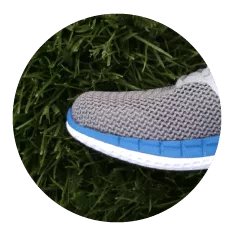
5. Rigid forefoot spring (goes up)
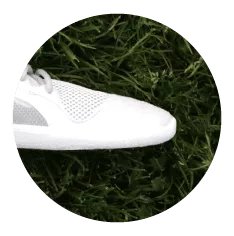
6. Zero spring (flat forefoot)
5. Rigid spring: this model can weaken the feet by causing toe dorsiflexion (extending the toes upward) and overstretching the plantar fascia. This foot position can lead to tibial periostitis, capsulitis, sesamoiditis, neuromas and plantar fascia pain.
6. Zero spring: this design allows the toes to rest flat on the ball of the foot. Correct toe position promotes balance, stability and resistance to injury.
Over-elevation of the heel

7. Raised heel

8. Flat heel
7. Heel elevation: This feature, present in many types of footwear, can alter the overall alignment of the body. Elevation of the heel above the ball of the foot can lead to Achilles tendonitis, hammertoes, neuromas, capsulitis, back pain and ankle instability.
8. Zero heel rise: This feature promotes proper alignment along the spine. A completely flat heel distributes the body weight evenly without straining the toes, ankles, knees and back.
In short, you will have understood, once we have discovered that the shoes we wear on a daily basis are responsible for our foot pain… we will look for “shoes on our feet”!
Let’s break the first 4 myths
2. Walk barefoot ?
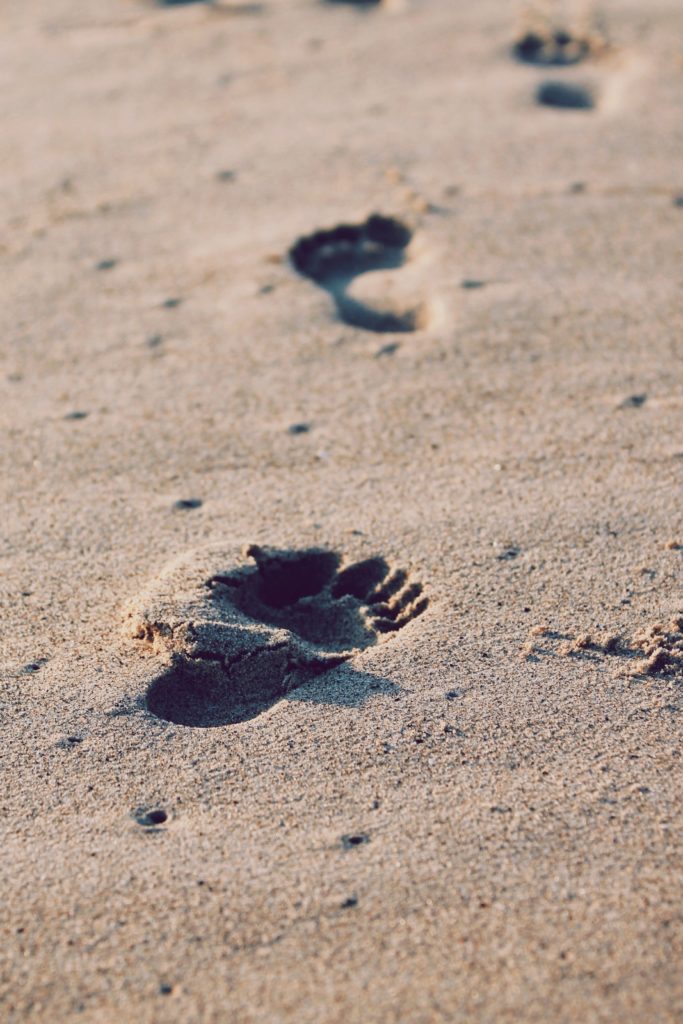
If we are looking for a shoe that respects the natural shape and potential of the foot, then why not simply walk barefoot?
In their book “Walking Barefoot”, Michael Sandler and Jessica Lee explain in detail how walking barefoot is beneficial to the body and mind.
According to them, “It’s an activity that young people can do to strengthen their feet and limbs; it’s an activity that older people can do to turn back the clock, gain balance, strength, flexibility and even bone density. And it’s something we can all do, even with the busiest of schedules, to get or stay in shape, while calming our minds.”
Walking barefoot awakens a light and natural stride in the body, thanks to the reaction of our feet to the ground. There is less impact and joint tension than in a shoe, it awakens muscles that have atrophied in our shoes, awakens nerve endings and our balance system, stimulates reflexology points on the soles of the feet, and even has anti-inflammatory effects thanks to the grounding. All of this translates into a stronger body, less joint pain, better posture, more mobility, better health and more freedom.
A better balance.
By touching the ground, people begin to awaken the vestibular (balance) system of the brain, stimulating new neural connections and reshaping their minds for better balance. For older adults, this is critical, as a single fall or hip fracture can lead to a progressive decline in health.
Greater strength.
Healthier feet.
The body functions on a use-it-or-lose-it basis. Use something, you can keep it. If you don’t use it, it atrophies. When people start walking barefoot, their feet wake up and start to strengthen again.
The corollary of this phenomenon is a decrease in the condition of the feet.
As the feet strengthen, plantar fasciitis diminishes, foot neuromas disappear, bunions begin to dissipate and other conditions such as hammertoes disappear. Even the arthritic foot begins to heal slowly as it develops more strength, flexibility and blood flow.
Better circulation.
Better posture.
We’ve all picked up an unhealthy habit or pronounced pelvic tilt from a lifetime of traditional footwear. The typical running or walking shoe is not just a shoe, it is a high-heeled shoe, with a heel of 2 to 5 cm (or more) in height. To avoid falling, we are forced to pull our buttocks back and bend forward at the waist, putting a strain on our hamstrings, lower back, upper back, shoulders and neck. Shoes also put a lot of force on our hips, knees and feet when we run. Once we are out of shoes, we can start to reverse this phenomenon. As we feel the ground, the nerve endings in the soles of our feet begin to tell us that we are leaning forward or bending forward at the waist. With practice, we run, walk and even stand with better posture. In addition, we reduce the stress and strain on our bodies considerably. And all this without any extra work!
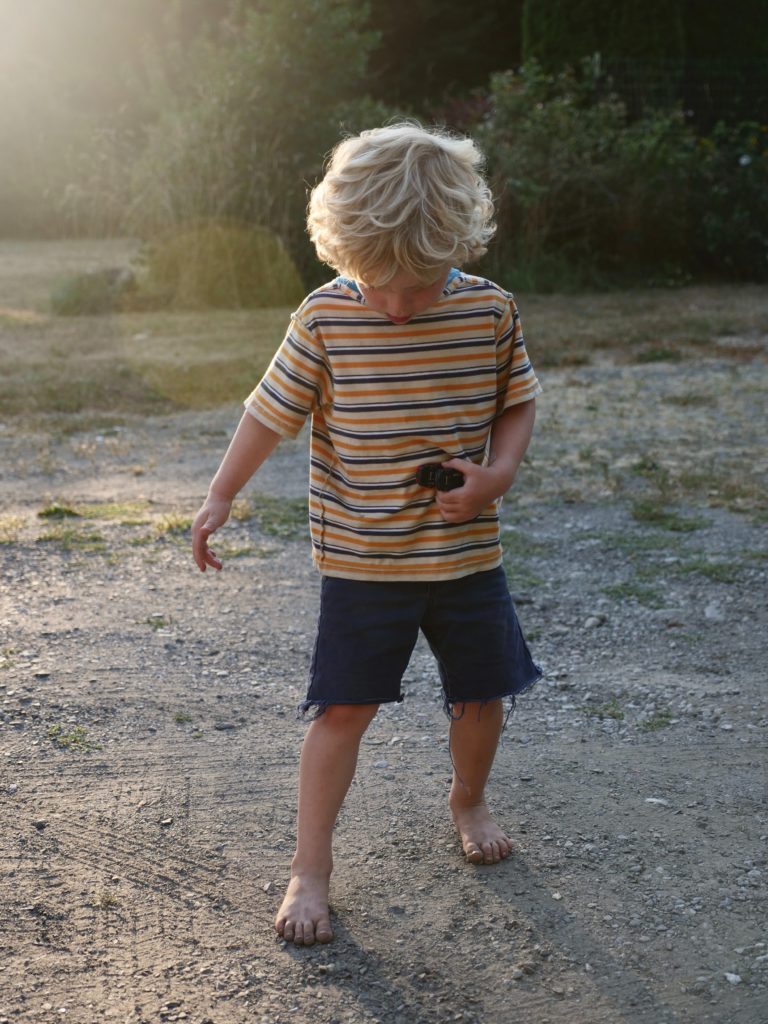
Children are healthier.
With childhood diabetes and obesity, children’s health has never been worse. And health begins with the feet. If you have strong feet, you can walk, run, bike and more. But with weak and sore feet, you don’t want to exercise. The American Podiatric Medical Association now recommends that children not wear shoes for as long as possible because they know that shoes weaken and deform the feet. If children don’t wear shoes, they stay healthy. In addition, touching the ground enhances their senses and helps reshape their brains. According to Dr. Merzenich, one of the leading neuroplasticians in the United States, barefoot stimulation helps improve memory, concentration and overall intelligence!
Decrease in blood pressure.
Reduce inflammation.
Finally, and perhaps most importantly, walking barefoot has been shown to reduce inflammation. According to many recent studies, inflammation is the number one cause of disease in the 21st century (from allergies to Alzheimer’s, arthritis to autism, cancer, cardiovascular disease, diabetes, asthma, anemia, lupus, multiple sclerosis, etc.) One possible solution is grounding, which involves reducing inflammation by walking, standing or even sitting barefoot on the ground.
Studies have shown that free radicals, the nasty bugs responsible for inflammation, carry a positive charge. While these positively charged particles play an important role in our immune system and healing response, if we don’t have a way to remove them, they accumulate in our bodies, creating excessive inflammation and cell/tissue damage.
At the same time, the earth naturally carries a huge negative charge (which is why all our appliances are grounded.) This difference in polarity or charge between your body and another is the reason you get “electrocuted” in the winter when you touch another object. This is your body’s way of discharging this unwanted charge. Direct contact with the soil also allows us to discharge free radicals.
Naturally, we move on to the concept of “grounding” or “earthing”.
earthing
“in other words, earthing.
3. "Earthing" or "grounding
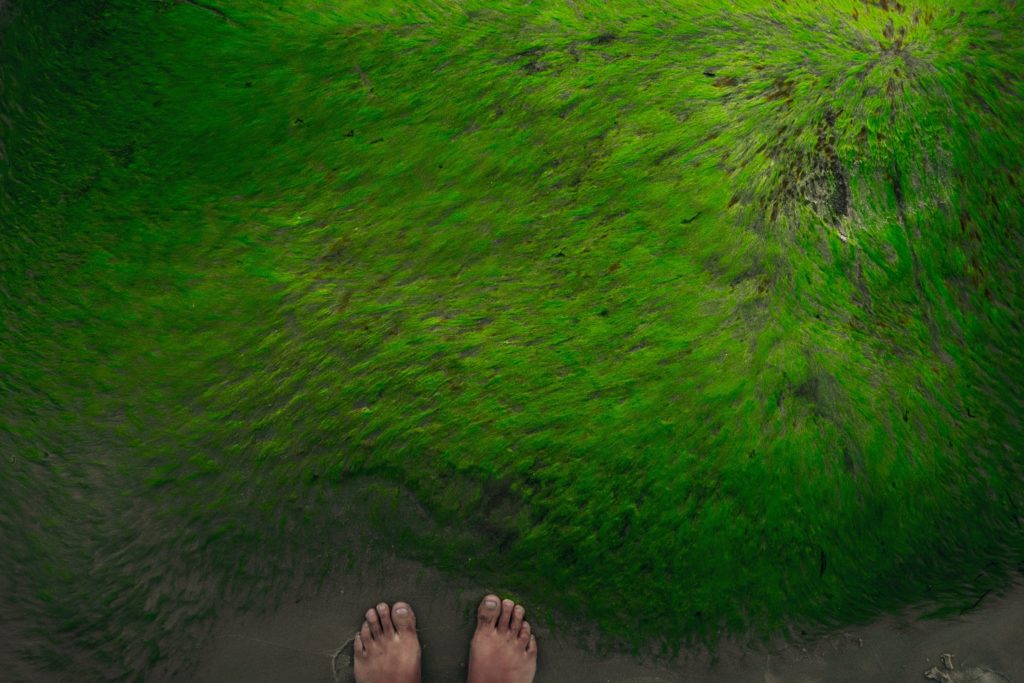
Why is this important?
The earth beneath our feet provides us with food and water. It gives us a surface on which to sit, stand, walk, run, swim, climb, play and build. It also provides us with something very surprising: electrons. When we touch the ground with our bare feet or our body, electrons enter us. This is what we call “being grounded”.
The earth’s surface has a virtually unlimited supply of mobile electrons that give the ground we walk on (as well as lakes and oceans) a natural negative electrical charge. When we touch the ground with our body, it dissipates static electricity and foreign environmental electrical charges that are on us. At the same time, we receive a charge of energy in the form of free electrons and our body synchronizes with the natural frequencies of the earth.
We all live disconnected.
In our modern society, we no longer sleep on the floor and walk barefoot everywhere we go, as our ancestors did. We wear shoes and live in houses that protect us from the elements, but in doing so, we have disconnected ourselves from this important source of electrons.
As long as we are connected to the earth, our body continues to absorb enough electrons to maintain the same electrical potential as the earth. This amount of electrons varies considerably from person to person depending on their lifestyle and activity, and is impossible to measure.
Documentaries
The Earthing Movie: The remarkable science of earthing
Grounding - The Grounded Documentary Film about "Earthing
(duration: 1h04min – English subtitles available)
Sources:
-
Zeidan H, Suzuki Y, Kajiwara Y, Nakai K, Shimoura K, Yoshimi S, Tatsumi M, Nishida Y, Bito T, Aoyama T. Comparison of the Changes in the Structure of the Transverse Arch of the Normal and Hallux Valgus Feet under Different Loading Positions. Applied System Innovation. 2019; 2(1):3. https://doi.org/10.3390/asi2010003
-
Barefoot Benefits (www.runbare.com)

